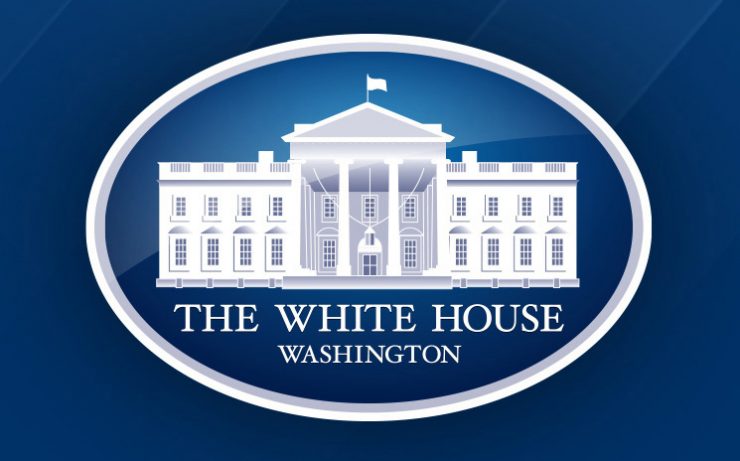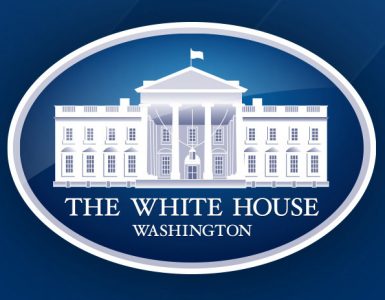In addition to steps the Biden-Harris Administration has already taken to provide over $32 Billion in loan relief to 1.6 million borrowers, the Biden-Harris Administration announced today it will:
- Provide up to $20,000 in debt cancellation to Pell Grant recipients and up to $10,000 in debt cancellation to non-Pell Grant recipients. Borrowers who earn less than $125,000 per year or households earning less than $250,000 are eligible for debt cancellation.
- Extend the federal student loan pause a final time through December 31, 2022 to provide borrowers a smooth transition back to repayment.
- Make the student loan system more manageable for current and future borrowers by cutting monthly payments in half for undergraduate loans and holding schools accountable when they hike up prices.
These actions will help borrowers who need it most – with 90% of relief dollars going to borrowers earning less than $75,000 per year.
- Even before applying the additional $10,000 for recipients of Pell grants, the typical Black borrower will see their balance cut nearly in half, and more than one in four Black borrowers will see their balance forgiven altogether.
- Currently about one in four Black Americans have negative net worth—meaning their total debt exceeds their total assets. The first $10,000 of debt relief would move over half a million Black Americans from negative to positive net worth.
- Among Hispanic borrowers, the first $10,000 of relief would reduce their balances by 52 percent and 1 in 3 Hispanic borrowers will see their balances entirely forgiven.
More information will be available to borrowers in the coming weeks to find out whether they qualify for debt cancellation and details about the proposed revamped loan repayment program.
Background:
- During the campaign, President Biden promised to provide targeted student debt relief to working and middle class families.
- Today, the Biden-Harris Administration is taking actions that fulfil that commitment and provide breathing room to borrowers as they prepare to resume student loan payments following the COVID-19 pandemic.
- A post-high school education should be a ticket to the middle-class. But the cost of college has skyrocketed and too many borrowers can’t afford to buy a home, start a business, or save for retirement.
- The Biden-Harris Administration announced today it will:
- Provide up to $20,000 in debt cancellation to Pell Grant recipients and up to $10,000 in debt cancellation to non-Pell Grant recipients. Borrowers who earn less than $125,000 per year or households earning less than $250,000 are eligible for debt cancellation.
- Extend the federal student loan pause a final time through December 31, 2022 to provide borrowers a smooth transition back to repayment.
- Make the student loan system more manageable for current and future borrowers by cutting monthly payments in half for undergraduate loans and holding schools accountable when they hike up prices.
- These actions will help borrowers who need it most – with nearly 90% of relief dollars going to borrowers earning less than $75,000 per year.
- And, they will make a real difference for current and future students. Under President Biden’s proposed changes to income-based repayment, the average borrower will save over $1,000 per year on loan payments, and the typical college borrower will see their loan payments cut in half.
- More information will be available to borrowers in the coming weeks to find out whether they qualify for debt cancellation and more details on the proposed revamp to the repayment program.
- Go to studentaid.gov to sign up to be notified automatically when this information is available.
- Today’s actions build on the steps that the Biden-Harris Administration has already taken to provide over $32 billion in loan relief to 1.6 million borrowers.
- That includes making temporary changes to the Public Service Loan Forgiveness program so more public service workers can get their debt cancelled after 10 years of service. Individuals can apply right now – until October 31st – to take advantage of these temporary changes to the PSLF program. Visit PSLF.gov for more information.
Q&A:
Why $10K of relief – why not more? And why only for individuals making less than $125K and households making less than $250K?
- Today’s actions advance the President’s vision of growing our economy from the bottom up and the middle out.
- It provides up to $20K in relief to Pell Grant recipients and up to $10K of relief to other borrowers – wiping away the full debt of 20 million people.
- We expect up to 43 million federal student loan borrowers to receive forgiveness, with the most relief reaching borrowers who need it the most.
- Eligible borrowers – those earning less than $125K annually or a household earning less than $250K – are most at risk of financial harm once the payment pause ends.
- That’s why today’s actions are focused on all these borrowers.
How will a borrower know if they qualify for student loan forgiveness?
- Borrowers who earned below $125K annually and households earning less than $250K will qualify for $10K in federal student debt relief.
- Pell Grant recipients under those same income thresholds will qualify for $20K of federal student debt relief.
- In the coming weeks, the Administration will release more information on how to see if you qualify and how to sign up to receive more information about these changes.
- Go to studentaid.gov to sign up to be notified automatically when this information is available.
Are current students eligible for relief?
- Yes, current students with loans are eligible for relief. Loans must have been originated prior to July 1, 2022.
- Dependent students who were enrolled in school during the last award year qualify if their parents’ household income was under $250,000.
Isn’t this unfair to all those borrowers who paid down their debt, making sacrifices along the way?
- President Biden believes that a post-high school education should be a ticket to the middle class. But for too many people, the cost of college has skyrocketed and student loans remain a lifelong burden.
- Today’s actions will give more breathing room to America’s working families as they continue to recover from the strains associated with the COVID-19 pandemic by providing targeted debt relief to those who need it most and making the student loan system more manageable in the future.
- The fact that some students in that situation were able to pay off their debt is a testament to them, but it is no reason to deny relief to others.
- And the American people agree – according to a recent survey, more than half of people who paid off their student loans support debt relief for other borrowers.
Won’t this just be a handout to wealthy doctors and lawyers?
- No. No individual earning more than $125,000 will see their debt cancelled.
- Nearly 90% of debt relief will go to individuals making under $75,000 per year
- President Biden is committed to building our economy from the bottom up and the middle out – today’s actions will provide critical breathing room for middle class families as they continue to recover from the impacts of the pandemic.
What is “Income Driven Repayment” and what are the changes the Administration announced?
- In addition to announcing targeted debt relief for middle class families, the President announced proposed changes to make the student loan system more manageable for current and future borrowers.
- Currently, there are several repayment plans where borrowers can make monthly payments based on their income level, and if they pay for 20 years, the remaining debt is cancelled.
- But there are too many plans and even the most generous plans leave borrowers with too high a payment.
- The Administration is proposing changes that cap the amount that borrowers would pay monthly for undergraduate loans at 5% of their income.
- These changes will be transformative for current and future borrowers. The typical borrower will pay $1,000 a year less. Undergraduate borrowers will see their monthly payments cut in HALF.
- Here’s one example — under this proposal, a typical nurse with an undergraduate loan making $77K per year, married with two kids, would pay only $61 per month compared to $295 per month under the current income-driven repayment plan.
What does a borrower need to do to receive forgiveness?
- The Department of Education will release more information in the coming weeks about how borrowers can sign up to receive debt relief.
- Some borrowers may be eligible to receive relief automatically because the Department already has access to information about their income during the pandemic.
- But other borrowers may have to fill out a very short form.
- Go to studentaid.gov to sign up to be notified automatically when this information is available.
How many borrowers will this impact?
- We project that up to roughly 43 million federal student loan borrowers (or 95% of all federal student loan borrowers) will be eligible to receive loan forgiveness and, of those, 20 million are eligible to have their debt completely cancelled.
- That’s assuming all those who are eligible for relief take steps to get it.
- Borrowers in the top 5% of incomes will not be eligible for relief, and nearly 90% of relief dollars will go to those making under $75,000 a year.
Won’t college just raise tuition now, knowing that taxpayers will end up shouldering the burden for bigger loans?
- The President believes strongly in imposing accountability on college raising costs without delivering additional value to students
- Already, his Administration has taken steps to increase accountability, including:
- Reinstating an enforcement office at the Education Department
- Terminating a college accreditor that had previously allowed colleges that defrauded borrowers, like ITT and Corinthian, to gain accreditation and get access to federal student loans
- Beyond that, the Department announced today they would be creating a list of programs that are the worst performers at delivering value for their costs, so that students can make informed decisions on where to go to school.
How will this impact inflation?
- Because we are restarting payments in addition to providing targeted debt relief at roughly the same time, we believe that any inflationary impacts from debt relief will largely be offset by the deflationary impact of restart.
- With different, less conservative, assumptions, the impact could well be neutral or deflationary.
What about income-driven repayment? Given its generosity, doesn’t that also add significant extra spending to the mix?
- The new IDR plan will likely take longer to implement than forgiveness.
- When implemented, the new plan will save borrowers who sign up money relative to what they would be paying on other income-based repayment plans.
- But because we cannot reliably estimate take-up of IDR at this point, we can’t comment on its impact, one way or the other.
How much will this debt cancellation cost?
- What the President announced is a restart of student loan payments, alongside targeted debt relief. In the short term, the impact of the restart will offset the cost of the targeted debt relief.
- In the long term, the fiscal impact of the debt cancellation will be affected by a number of factors, including how many borrowers will take advantage of this relief and the economic benefits that can occur as a result of the targeted debt cancellation. For example, debt relief can lead to more Americans having opportunities to create small businesses, helping grow our economy.
- Ultimately, we won’t have an estimate of the cost of this until the program is implemented.







